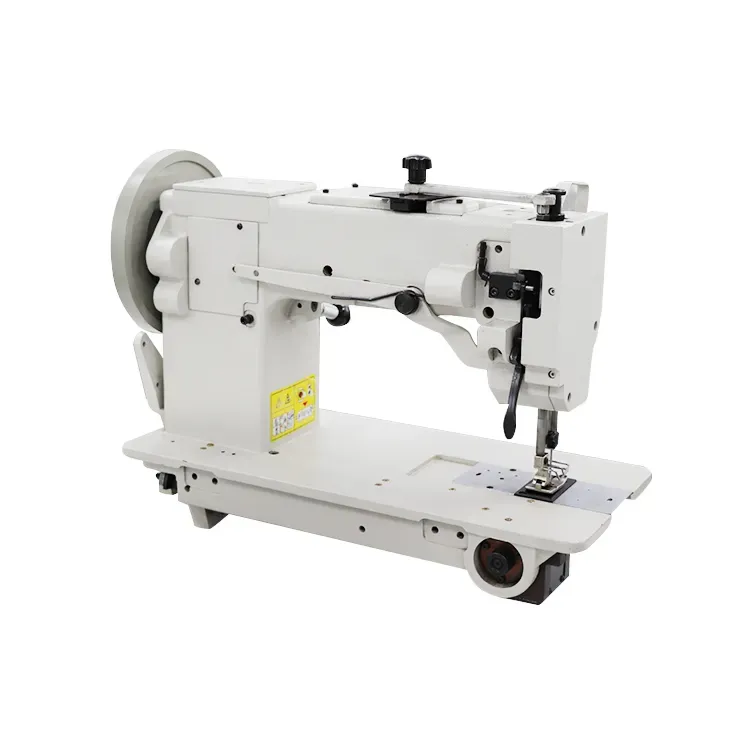Leather Stitching Machine for Crafting High-Quality Projects with Precision and Ease
The Art and Science of Stitching Leather Exploring Machine Techniques
Leather is a timeless material that has been used for centuries in various applications, ranging from fashion to furniture. Its durability and aesthetic appeal make it a popular choice for artisans and manufacturers alike. However, stitching leather can be a daunting task, especially when done by hand. This is where stitching leather machines come into play, revolutionizing the way leather goods are produced.
Understanding Leather Stitching Machines
Leather stitching machines are specialized equipment designed to handle the unique properties of leather. Unlike fabrics, leather is thicker, denser, and often more challenging to manipulate. Hence, standard sewing machines may struggle to perforate and stitch leather without causing damage. Leather stitching machines possess features tailored specifically for this material, ensuring precise stitching while maintaining the integrity of the leather.
These machines come in various types, each serving specific needs. Walking-foot sewing machines are popular for their ability to feed multiple layers of leather evenly, making them ideal for bags, belts, and other thick products. Another type, the cylinder-bed sewing machine, is designed for sewing in tight spaces, perfect for small leather goods like wallets or purses.
The Advantages of Using a Leather Stitching Machine
1. Precision and Consistency One of the most significant advantages of using a stitching leather machine is the precision it offers. Automated systems ensure consistent stitch lengths and spacing, which is vital for both functionality and aesthetics. This consistency is difficult to achieve with hand stitching, especially for large production runs.
2. Time Efficiency Leather stitching machines significantly speed up the production process. What might take hours to complete by hand can often be done in a fraction of the time with a machine. This speed is crucial for businesses looking to meet demand and deliver products on time.
3. Strength and Durability Machines often use heavier threads and stronger needles, allowing for more robust stitches. This strength is especially important in leather goods that need to withstand wear and tear, such as shoes, bags, and upholstery.
4. Versatility Many modern leather stitching machines are designed to handle various types of leather and can easily adapt to different projects. This versatility allows manufacturers to diversify their product offerings without investing in multiple types of equipment.
stitching leather machine

Techniques in Leather Stitching
While machines provide the necessary capabilities to stitch leather effectively, understanding specific techniques can further enhance the quality of the finished product.
1. Saddle Stitching This traditional technique involves using two needles and a single length of thread to create a strong, durable stitch. While often done by hand, many advanced leather stitching machines can replicate this technique, ensuring the traditional aesthetic while maintaining machine efficiency.
2. Lockstitch Utilizing two threads, one from the needle and another from the bobbin, lockstitching is commonly used in industrial sewing. This method is favored for its strength and is widely applied in leather goods production.
3. Chain Stitch Known for its elasticity, the chain stitch is beneficial for seams that may be subject to stress movements and is typically used in garments or softer leather applications. Certain machines specialize in executing this stitch type with impeccable precision.
The Future of Leather Stitching Technology
With the advent of technology, leather stitching machines are undergoing continuous innovation. Features such as computer numerical control (CNC) allow for intricate patterns and designs, enabling the customization of leather goods on an unprecedented scale. As sustainability becomes a crucial consideration in the leather industry, machines that optimize material use and reduce waste are expected to gain popularity.
Additionally, as artificial intelligence and automation reshape manufacturing, the integration of smart technology into leather stitching machines will likely enhance efficiency and predictability in production processes.
Conclusion
Stitching leather has evolved remarkably, thanks to the development of specialized machines that streamline the process. The advantages they offer—including precision, speed, and durability—make them indispensable tools in the leather goods industry. With ongoing advancements in technology, the future of leather stitching appears bright, promising more innovative solutions for artisans and manufacturers to create quality leather products. Whether you are a small artisan or a large manufacturer, understanding and investing in the right stitching leather machine can significantly enhance your craftsmanship and productivity, ensuring that the tradition of leatherworking continues to thrive.
-
Industrial Cylinder Arm Sewing Machine: Revolutionizing Heavy-Duty SewingNewsJul.28,2025
-
Cylinder Arm Sewing Machine: Perfect for Special Sewing ApplicationsNewsJul.28,2025
-
Cylinder Bed Sewing Machine: Essential for Sewing Complex MaterialsNewsJul.28,2025
-
Heavy Duty Sewing Machine: The Essential Tool for Industrial ApplicationsNewsJul.28,2025
-
Computerized Pattern Sewing Machine: Revolutionizing Precision StitchingNewsJul.28,2025
-
Heavy Duty Industrial Sewing Machine: Power Meets PrecisionNewsJul.28,2025
-
Leather Sewing Machine: The Industrial Standard for Tough MaterialsNewsJul.18,2025





























